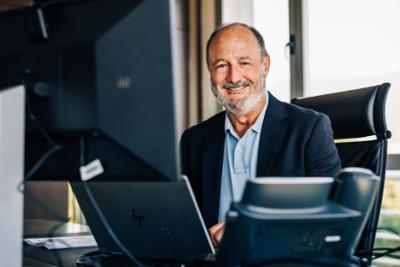

Nicolás Klingenberg (FEGECA): “Manufacturers are driving R&D&I to find new sustainable and efficient solutions”.

Nicolás Klingenberg, president of FEGECA (Manufacturers of Heat Generators and Heat Emitters) tells us how approximately 66% of energy consumption in Spanish homes is used for heating and domestic hot water. He adds that “as manufacturers we are very aware of this and have always worked to develop systems which pollute less and are more efficient to increase savings potential”. Klingenberg discusses the role of new technology in this issue and the challenges facing the sector for 2024.
How committed are manufacturers of heat generators and emitters to decarbonisation and sustainability?
Around 66% of energy consumption in Spanish homes is used for heating and domestic hot water. As manufacturers we are very aware of this and have always worked to develop systems which pollute less and are more efficient to increase savings potential. A different matter is the fact that certain technologies cannot achieve significant volumes on the market without sufficient support from the government, either through regulations that favour their use or through subsidies that motivate users to acquire them.
As manufacturers we must be prepared for market changes as a consequence of these regulations. Developing new equipment, but also adapting not only our production capacity to the expected volumes, but also our sales processes, the technical training of our sales and installer support teams, our technical assistance networks, etc. This is a huge endeavour to which we are all strongly committed.
We must not ignore the fact that Europe is committed to the decarbonisation of all building stock by 2050, a reality that is moving forward in small steps across all sectors, but which is of key importance for our sector. For this reason, manufacturers of heat generators and emitters are focusing all their efforts on driving their R&D&I departments to provide new sustainable, efficient and long-lasting solutions. We are not only enabling the energy transition and thus helping society to increase the efficiency and comfort of their homes and improve their finances, but also establishing the fitting and installation sector as a resilient market, adapted to the current energy situation.
What is the role of new technologies in this goal?
The goals are clear: systems which use less, pollute less, but also make homes more comfortable. They must also adapt to fitting requirements. Installing a system in a high-rise residential building designed from scratch is not the same as replacing existing systems in the same type of building. Equipment technology must be driven by the use cases, not the other way around. So it is not a question of whether the technology is old or new, but rather of what the best option is to improve the efficiency and sustainability of that home. And the range of options is broad, from geothermal energy combined with solar power, to a condensing boiler working with renewable gases, to the hybridisation of an aerothermal system with other systems
I always say that perfect is the enemy of good. What I mean by this is that creating a regulatory policy consisting of the highest possible standards can make its implementation impossible. FEGECA manufacturers are multi-technological: we offer solar power, gas combustion boilers, pellet boilers, aerothermal system, geothermal energy.... We are not biased about which technology should predominate, we have them all. Common sense, however, tells us that there are other routes in addition to 100% electrification which, although not perfect, are possible.
What are the tools and goals with which the sector approaches 2024?
Out starting point is 2023, a year that is turning out to be very different from what was expected. There are also many regulations (unification of the RITE with the ErP and ELD regulations, new DEE, etc.) that have yet to be published and which, depending on their content, change the application criteria of the different technologies, and therefore the expected sales volumes of each of them. Against this shifting backdrop, we are also confronted with misinterpretations that confuse users about which system they should put in their home. For example, recently, different media sources have published that the installation of new gas boilers is prohibited, which is completely false.
Although it is clear that there is a trend towards electrification, this market has not developed as expected, mainly due to the high replacement cost, which can be 10 times higher on average. Although there are subsidies, they are very complicated to organise and, in our opinion, are not high enough to accelerate change.
On the other hand, we are starting to see a movement in renewable gas production plans that may make boilers capable of working with these systems continue to be the largest by volume in the coming years. That is why manufacturers will continue to work on solutions capable of hybridising the different technologies in order to find the best balance between investment, efficiency, installation options and emission levels.
Our responsibility is to help achieve the European targets of decarbonisation and reducing the use of primary energy sources. We continue to believe that the sector has a huge opportunity, the work of adapting the building stock to meet these targets should lead to a dramatic increase in the fitting and installation sector. We will continue to invest and work in all areas to take full advantage of this unique opportunity.




